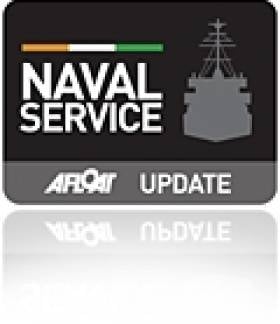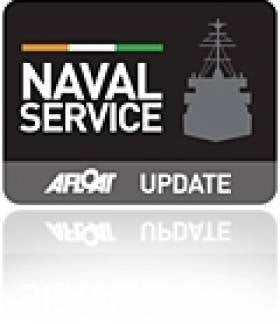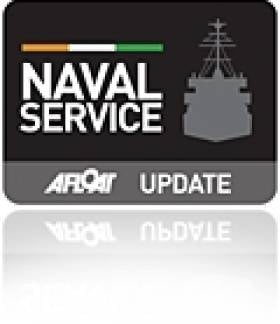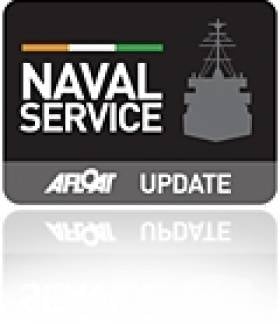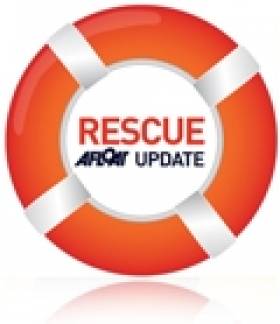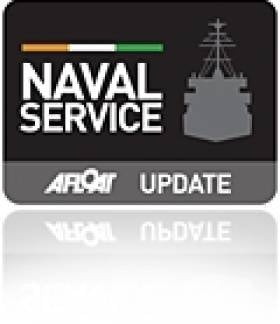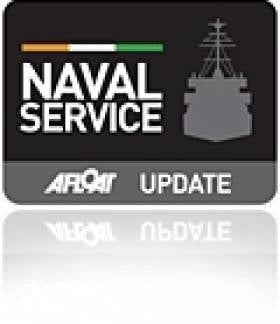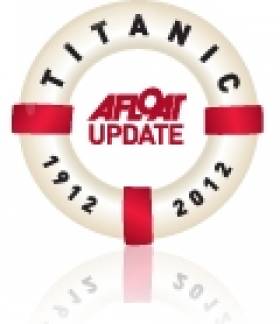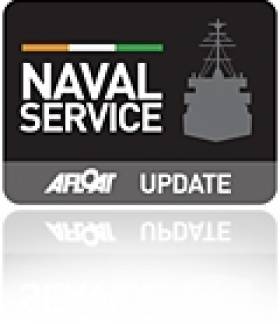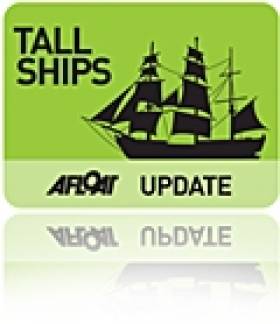Displaying items by tag: LE Aoife
Govt Donated LÉ Aoife Despite €500K Offer
#Navy - An offer to purchase the decommissioned Naval Service vessel LÉ Aoife for half a million euro was not taken up by the Government, it has emerged.
RTÉ News reports that a Waterford-based marine engineer made the offer on behalf of a Dutch client with a view to using the OPV for security operations in Africa.
The deal, offered over a year ago, would have been worth far more than the €320,000 for which her sister ship LÉ Emer sold at auction in 2013.
That vessel was recommissioned last month into the Nigerian Navy as NNS Prosperity.
But the prospective purchasers say they never heard back from the Department of Defence, and only learned of the State's donation of the LÉ Aoife to Malta through the media.
RTÉ News has more on the story HERE.
Forget Malta - Send LÉ Aoife To Cork As Floating Museum, Says Mayor
#LÉAoife - Cork county councillors have called for the decommissioned LÉ Aoife to be turned into a floating museum after Maltese military brass branded the vessel as "junk".
"Past its sell by date" is how some members of Malta's armed forces see the 35-year-old OPV that's set to be gifted to the Mediterranean island country to shore up its naval capacity, as previously reported on Afloat.ie.
Now, Cork county mayor Alan Coleman has offered that a tourism group in Cork Harbour could take on the vessel as a museum near the Naval Service headquarters on Haulbowline, in the face of what's been taken as a "snub" by the Maltese.
According to the Irish Examiner, Mayor Coleman has the unanimous support of his council colleagues for the move to write to Marine and Defence Minister Simon Coveney and make a formal offer.
The mayor also expressed his surprise at the gifting of the LÉ Aoife when her sister ship the LÉ Emer was sold at auction for €320,000.
LE Aoife Donation Not Welcome In Malta?
#LEAoife - Ireland's donation of the LE Aoife to Malta is not going down well with military authorities in the Mediterranean island country, according to The Irish Times.
Days ago it was reported that Ireland would be donating the decommissioned Irish Naval Service OPV to help address a shortfall in Malta's current naval capacity as it faces a growing humanitarian crisis in the Mediterranean.
But it's now emerged that members of Malta's armed forces view the 35-year-old vessel as "past its sell by date", with one retired serviceman saying it "sets a very very bad precedent for other junk to follow being dumped on us."
The Irish Times has more on the story HERE.
#navy – Cork Auctioneer Dominic Daly is to sell the Navy Vessel LE Emer (P21) in early October. The Auctioneer, who recently handled the public auction of the Clipper Faith Cargo vessel for the Admiralty Marshall, confirmed arrangements are now in place with the Department of Defence to dispose of the ship this Autumn. Interest could come from a variety of sources including the conversion of the ships for the superyacht market or use as an offshore energy supply boat or a research vessel.
A year later the sister ship LE Aoife (P22) will also go on the market. Both ships are being replaced with new builds for the Irish Naval Service.
As Afloat.ie reported in May, the two Irish-built navy patrol ships launched at Verolme Cork Dockyard, are to be sold off after 40 years of service.
LE Emer (P21) and a sister ship LE Aoife (P22) were built between 1978 and 1980 at the Rushbrooke shipyard near in Cobh, Co Cork.
The first ship of four in the Offshore Patrol Vessel (OPV) class built in Cork in 1972, the LE Deirdre (P20) , was decommissioned in 2001 and sold for €190,000. She was later converted into a luxury yacht.
The two ships will be replaced by two new OPVs currently under construction in the UK.
Navy Tows Stricken Norwegian Yacht To Shore
#Rescue - RTÉ News reports that a Norwegian couple have been rescued after their yacht suffered damage off the south coast.
The vessel sailed by the couple in their late 60s apparently dismasted some 160 miles off the Cork coast en route from the Azores to the Shetland Islands.
They were discovered by a passing fishing trawler early yesterday (21 May) and assisted last night by the Naval Service vessel LE Aoife, which is currently towing the stricken yacht to Castletownbere.
Lt Captain Erica Downing of the LE Aoife told RTÉ that the couple were "extremely lucky" to be spotted by the French fishing boat, having not seen any other sea traffic the previous fortnight.
RTÉ News has more on the story HERE.
Naval Service to Sell Off Pair of Older Patrol Vessels
#NavalService – Two Irish-built navy patrol ships launched at Verolme Cork Dockyard, are to be sold off after 40 years of service according to the Herald.
LE Emer (P21) and a sister ship LE Aoife (P22) were built between 1978 and 1980 at the Rushbrooke shipyard near in Cobh, Co Cork.
The first ship of four in the Offshore Patrol Vessel (OPV) class built in Cork in 1972, the LE Deirdre (P20) , was decommissioned in 2001 and sold for €190,000. She was later converted into a luxury yacht.
The two ships will be replaced by two new OPVs currently under construction in the UK.
Naval Service Detains Northern Ireland Fishing Vessel
#Trawlerdetention – The skipper of a Co. Down fishing vessel is due in court in the Republic after the Irish Naval Service detained the boat off the Co. Galway coast.
It is understood the skipper of the Kilkeel based vessel was detained on suspicion of fishing illegally inside the Republic's waters.
The Archane, was boarded by the Irish navy on Tuesday afternoon, about 11 nautical miles south of the Aran islands.
The fishing vessel was then escorted by the Irish naval vessel, L.É.Aoife (P22) to Rossaveal. To read more the BBC has a report.
Royal Navy Attend Presidential Fleet Review for Cobh Titanic 100
#COBH TITANIC 100 - Following President Michael D. Higgins visit to Cobh to commemorate the centenary call of RMS Titanic to Queenstown, the town yesterday hosted a Naval Service review that included the Royal Navy's HMS Mersey.
The President as supreme commander of the Defence Forces boarded the Naval Service 'flagship' L.E. Eithne which passed the guest-ship, a River class patrol vessel which headed a line of vessels which lay at anchor of Cobh's waterfront, they were the L.E. Aoife, L.E. Aisling and L.E. Niamh
The historic event which marked the pinnacle of the Titanic 100 Cobh centenary week will continue as part of a year-round programme of events. For information visit www.titanic100.ie. On the homepage the L.E. Niamh features again, where on this occasion marine photographer Jehan Ashmore captured the vessel underway as she powered her way at high-speed through a misty Dalkey Sound.
Among the many places throughout Cobh where thousands of tourists have flocked since the Balmoral docked on Monday to retrace the liner's maiden voyage, has been the White Star Line pier.
From this pier were the last passengers to depart Queenstown on board the tenders PS Ireland and PS America to the ill-fated Titanic that struck an ice-berg. On her Irish call 123 passengers were transferred to the Titanic which lay outside Cork Harbour, while 7 passengers disembarked from the liner and headed ashore.
What remains of the pier which is not accessible to the public and is in danger of collapsing, there has been calls to raise funds to save the structure, as previously reported.
Also in attendance during yesterday's historic proceedings, was the excursion passenger tender Spirit if the Isles which is operating on her second season since starting Cork Harbour cruises last year. They run between Cork city quays and downriver along the Lee to Cobh.
In the 1980's the tender then named Ingot ran excursions from Dun Laoghaire Harbour into Dublin Bay and likewise of L.E. Niamh, she too transited Dalkey Sound as part of her sightseeing tours.
- RMS Titanic
- White Star Line
- Cobh Cruise Callers
- Cobh, Cork Harbour
- Cruiseships
- Balmoral
- FredOlsen Cruise Lines
- Titanic Memorial Cruise
- naval service
- LEEithne
- Royal Navy
- HMS Mersey
- President Michael D Higgins
- Queenstown,Ireland
- PS Ireland
- PS America
- Spirit of the Isles
- Cork Harbour Cruises
- Cork Harbour News
- Dalkey Sound
- LE Niamh
- LE Aoife
- LE Aisling
- Cork Harbour
- River Class Patrol vessels
- River Lee
- Irish marine photographers
LE Ciara Returns to Sea after Hull Repairs
#NAVAL SERVICE- The Naval Service patrol ship LE Ciara (P42) has been cleared to return to sea, following repairs to a hole in its hull, the Irish Times reports.
The high-speed coastal patrol vessel (CPV) is the latest in a series of vessels in the fleet which have required substantial repair due to a combination of age and rough Atlantic conditions.
The oldest ships of the eight-strong fleet, the sisters LE Emer , Aoife and Aisling , have all suffered plate erosion due mainly to age. The service is due to received two new ships at €50 million each, which will be commissioned in 2014 and 2015, under a deal with British shipbuilder Babcock Marine.
The Celtic Mist, the new flagship of the Irish Whale and Dolphin Group, was berthed in Waterford city for the Tall Ships weekend writes Shay Fennelly. Gifted to the IWDG in May 2011 by the family of a former Irish Prime Minister, Charles Haughey, who declared Irish waters a whale and dolphin sanctuary in 1991.
Celtic Mist left Waterford on Sunday morning in glorious sunshine on passage down the River Suir for the Tall Ships Parade of Sail off Dunmore East watched by thousands of people from the river bank at Passage east, Duncannon and Dunmore East.
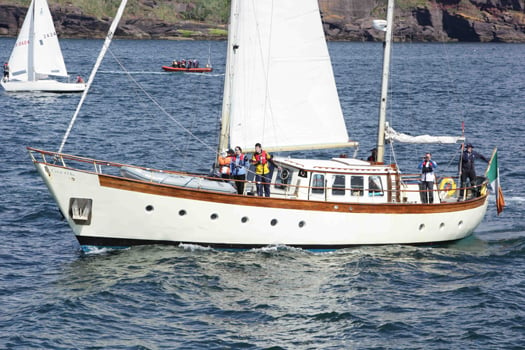
Ireland's only entry in the 2011 Tall Ships race from Waterford to Greenock Irish Whale and Dolphin Groups's research vessel Celtic Mist in the Tall Ships Parade of Sail off Dunmore East in Waterford. Photo: Shay Fennelly/Aquaphoto
The Tall Ships fleet was reviewed by Flag Officer Commanding Naval Service Commodore Mark Mellet and Sean Flood Sail Training Ireland (Board) and a Goodwill Ambassador for Sail Training International past the LE Aoife. Over 1200 young people, many who have never been to sea before, are onboard the 50 tall Ships sailing to Greenock.
On board Celtic Mist are Captain Fiacc Brolchain, Gary Davis, Eithne Griffith, Deirdre Slevin, Conor Ryan and trainees Siobhan Ardener (19) from Killarney, Co Kerry, and Keith Cleere (19) from New Ross, Co Wexford.
The race started slowly at 15.00hrs, five miles south of the Hook Lighthouse in 10 knots of wind and blue skies and headed for the Irish Sea to Scotland.
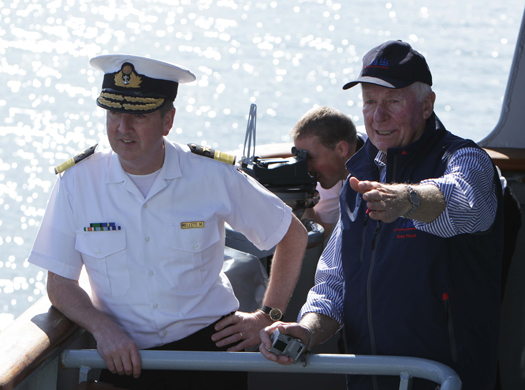
Flag Officer Commanding Naval Service, Commodore Mark Mellet (left) and Sean Flood Sail Training Ireland (Board) and a Goodwill Ambassador for Sail Training International on board LE Aoife reviewing the Tall Ships fleet as they passed off Dunmore East, County Waterford. Photo: Shay Fennelly/Aquaphoto



























